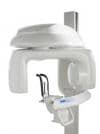A recently published scientific study found that Planmeca Ultra Low Dose (ULD) CBCT technology was suitable for diagnostic use.
Planmeca’s Ultra Low Dose CBCT imaging technology was affirmed by a recent study published in the Oral Surgery, Oral Medicine, Oral Pathology and Oral Radiology journal.
The study found that the overall image quality of Planmeca’s ULD was at a diagnostically acceptable level for the defined diagnostic task. It also remarked that applying the Planmeca AINO noise reduction filter positively affected image quality when the exposure dose was low.
The company’s ULD technology has been studied in several scientific papers, one of which concluded that the technology reduces patient doses by up to 77% with no statistical reduction in image quality compared to standard protocols, according to Planmeca. The recently published study is the sixth clinical study on Planmeca ULD that confirmed its effectiveness and quality.
“This is our sixth major study validating the effects of ULD on our industry,” said Brent Garvin, senior product manager for imaging in North America at Planmeca. “This is exciting because no one else in the industry has this kind of validation from so many sources.”
Other studies have concluded that ULD is recommended for pre-implant radiographic assessment and that Cephalometric images reconstructed from ULD CBCT images should be considered in orthodontic treatment planning.
Planmeca ULD images were also found to have sufficient diagnostic image quality in pediatric settings for planning and follow-up imaging.
Planmeca says that lowering the patient dose is important because it reduces risk to the patient and allows clinicians to employ CBCT technology in more applications.
“Planmeca is currently the only manufacturer in the market with these advanced features and the evidentiary clinical studies to support the claims,” said Garvin. “The implications of ultra low dose patient radiation paired with diagnostically valuable image quality is paving the way for CBCT use in routine diagnostics.”
Photo via Planmeca










